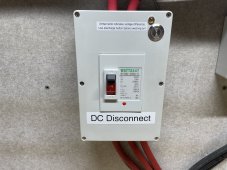You are absolutely right, from what I can tell, most server rack batteries do have precharge circuits. However, my application is vehicle-based, and neither the form-factor or the voltage of server-rack batteries make sense for me. I should have remembered this common server-rack feature. However, I don't see this feature in drop-in batteries or other batteries targeting the vehicle or marine market.
"drop-in" batteries tend to be cheap and they lack an on/off switch.
Question though: do the server-rack precharge systems function after the battery is "on" and a user switches a down-stream breaker/switch before the/an inverter?
Here you go:
I didn't realize the the BMS high current reaction was the primary issue. That would explain other things.
Yep. It's why inverters don't have a pre-charge feature. They were designed to be hooked to sources (lead acid batteries) that could deliver a very brief surge with higher internal resistance that also served to limit the surge.
Essentially, we have decades of products designed a specific way. Now we have a market flooded with power sources with a built-in limitation that can't meet the demand. Should the inverter manufacturers tailor their design to the limitations of cheap products, or should the new products meet the need of the existing industry?
"Drop-in" is misleading. Lead-acid can deliver ridiculous surge currents at the expense of voltage. LFP has a piece of circuitry that prevents the battery from meeting the need of pre-charging the capacitors of an inverter.
I see this as a battery problem, not an inverter problem.
I like this answer because it simplifies my system.
However, I asked on the Victron forum if my planed Phoenix 1200 W inverter needed a precharge, and I was assured that it did. So, conflicting advice.
BTW, I have read discussions where people are building vehicle systems with 3000 W inverters, likely to a) run everything on AC, and/or b) an AC powered air conditioner.
Good news. You get to be the Guinea pig. Pretty simple... install without a pre-charge circuit. Keep a #2 pencil with both ends of the "lead" exposed (about a 6Ω resistor) handy for a quick fix.
Let's say the 12V battery has a resistance of 2mΩ (pretty typical for a decent 12V 100Ah LFP):
12V / 0.002Ω = 6000A
Doubt your BMS is rated for 6000A, and it's probably going to see that as a short circuit and trigger protection.
Alternative: Victron MPPT can operate w/o battery, run directly off PV and will provide voltage/current to the battery terminals. THIS can actually pre-charge your capacitors. The MPPT is current limited and will only output what it can. If you have PV and sunshine, you don't need a precharge with a Victron MPPT... unless it's at night.



